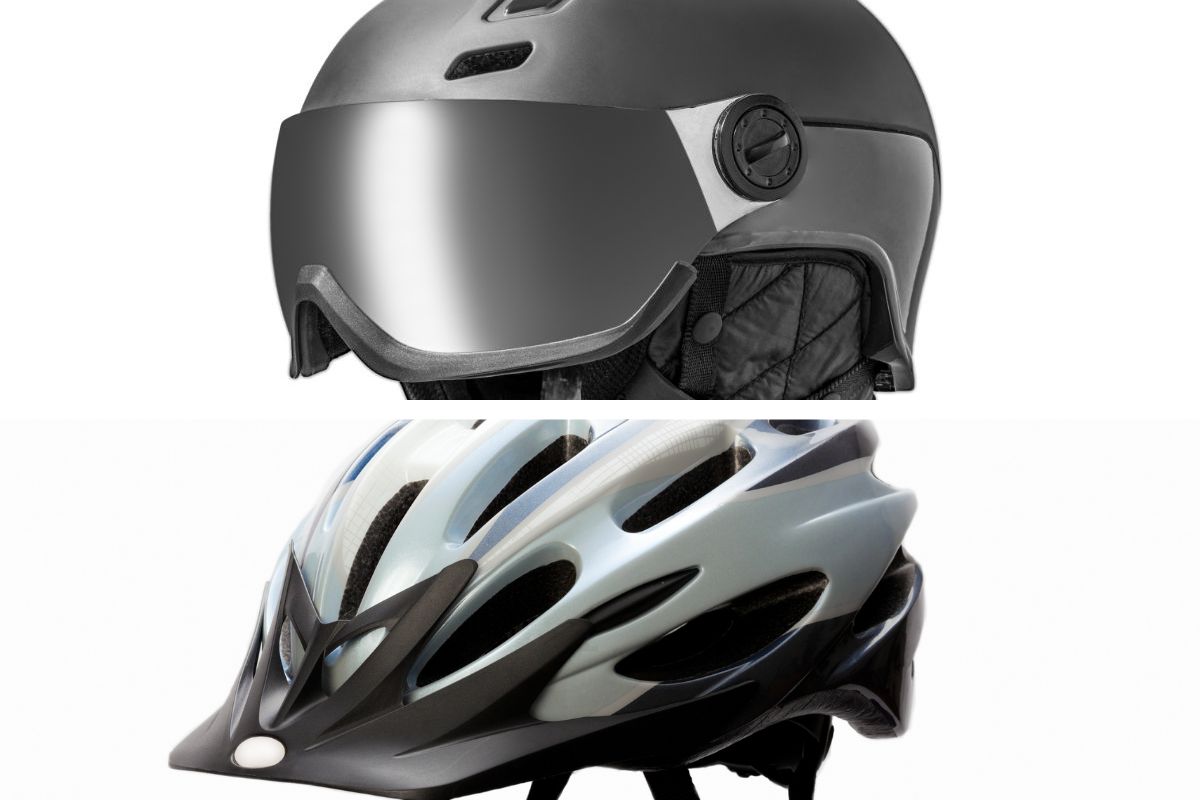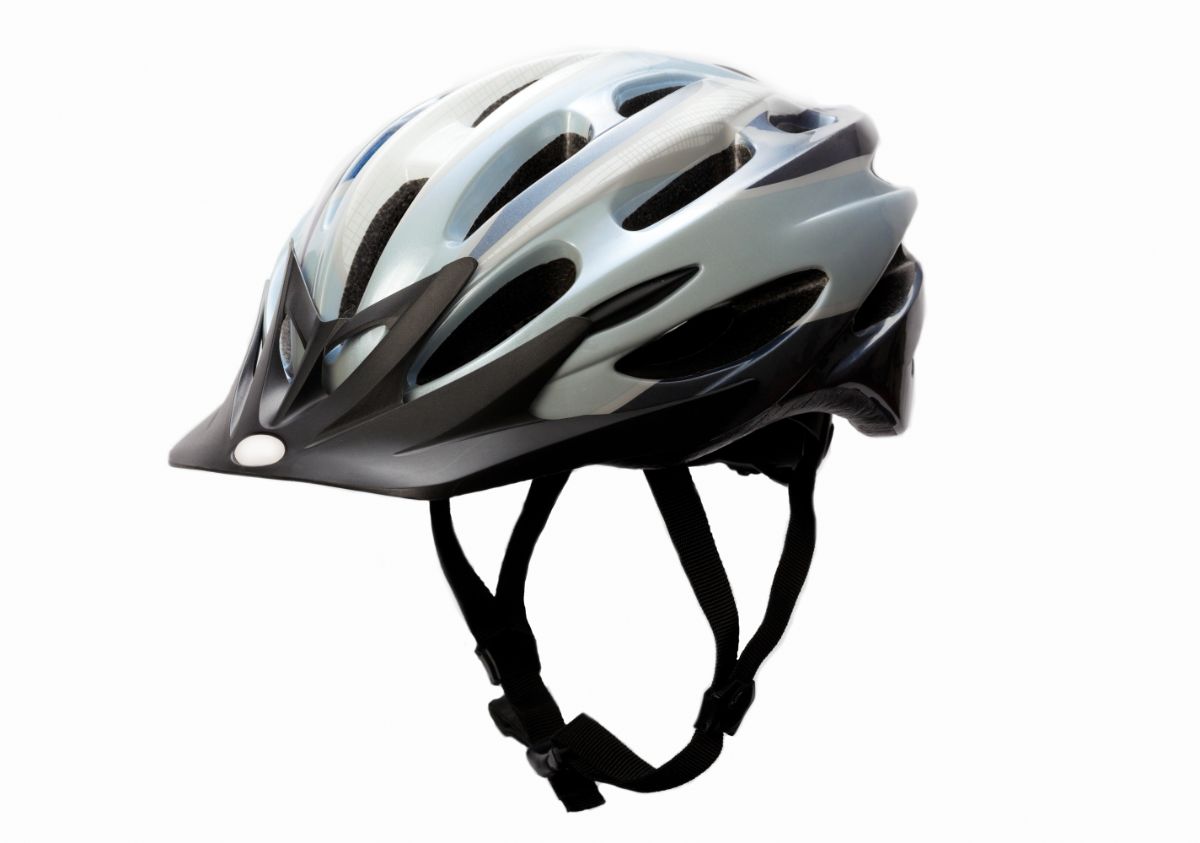
If you enjoy skiing and cycling, you may think of saving money by purchasing a single helmet for both activities. True, a skiing helmet and a cycling helmet have some similarities, but they are significantly different.
A helmet designed for use in one sport may not be the best choice for another because their design is for different scenarios. A helmet’s primary function is to protect its wearer from head and brain injury in sports.
The helmet does this by absorbing the impact of a collision, dispersing it throughout the helmet, so the wearer’s head is protected. Overall, helmets reduce head and brain injury risk by 65 percent to 88 percent. In addition, it reduces 65% of facial harm to the upper and mid-face.
In this article, we will look at skiing helmets vs. cycling helmets and know their differences so that you choose a suitable lid for your ride.
Skiing Helmets

A skiing helmet is a piece of protective equipment that you can use to prevent head injuries while skiing. It’s usually made up of a hard shell and padding on the inside. The padding design is meant to absorb shock and reduce the impact on your head.
Cycling Helmets

A helmet is a protective headgear covering your head and may include a visor to protect your eyes from harmful UV rays. It also has padding on the sides and back of your head to keep it safe from impact during a fall or crash.
In addition, helmets have enough vents in them so that air can circulate through the wearer’s head while they are riding. This helps prevent heatstroke because of overheating in hot weather.
Brief History of Skiing Helmet and Cycling Helmet
Both helmets started with a hairnet that was not as effective as today’s helmets.
Skiing Helmet History

Before modern alpine racing, no helmets were in use. However, in 1938, a racer hit a tree during an alpine competition and was injured. This is where racers started to use hairnet helmets.
In 1953, AGV company in Italy created a fiberglass skiing helmet. Then, Herman Roth created a liner made from expanded polystyrene bead foam the following year.
By 1973, there were inexpensive plastic helmets in the market, especially for kids. And in 1974, helmets with improved quality were produced, which material was EPS.
The use of helmets started to be more available around 2000. And by 2010, a good number of skiers were using helmets. This saw a drop in head injuries during skiing.
Today, almost everyone participating in this activity is wearing a ski helmet. The helmets have entirely evolved, and they come with the latest technology.
Cycling Helmet History

In the 1880s, racers saw that the head injuries from races had increased, and they used pith helmets. The 1970s saw the use of a hairnet that was made from leather. In 1975, the first commercial bike helmet, “Belle Baker,” was released. It was made of a polystyrene-lined hard shell.
In Mid-1980, most bike helmets had EPS foam liners with ABS or polycarbonate hard shells, and In 1984, Bell produced a kid’s helmet, “Lil Bell Shell,” which had no cover.
Then in 1985, the bell released another helmet, “Snell B85,” which was later refined. These helmets were either hardshell or no shell design.
The year 1990 saw the introduction of the in-mold micro shell helmet, which had a thin shell. This type of helmet dominated the bike helmet market, but they were still not widespread.
In the late 90s and early 2000, advanced technology in helmets made them famous. The material being used was high quality. They also had paddings and buckles.
Nowadays, there’s a wide variety of cycling helmet options available for everyone, from pro-athletes to hobbyists. They also included plenty of stylish options for those concerned about how they look on their bike.
Similarities and Differences Between Skiing Helmets and Cycling Helmets?
Skiing helmets and cycling helmets are very similar. You can use both to protect yourself from head trauma in case of an accident. Both have vents, which provide a cooling breeze for riders. Both also have a built-in visor to protect riders’ eyes from the sun.
Cycling helmets and skiing helmets are designed for very different purposes. For example, a cycling helmet is for protecting or minimizing head injuries from falls. On the other hand, a skiing helmet keeps you warm and, at the same time, protects your head during a fall or an avalanche.
The main difference is that one is designed to keep you cool while the other keeps you warm during the activities.
Materials
Skiing helmets are made of polycarbonate and polystyrene plastic shells. Polycarbonate is an extremely tough type of plastic and does not dent or scratch easily. It also bends slightly under pressure to help absorb some of the force from an impact, which helps prevent injuries to your head and brain.
In addition, fiberglass or carbon fiber can also be used to make skiing helmets.
Cycling helmet liners are mostly made of Expanded Polypropylene (EPP), Expanded Polystyrene Foam, and Expanded Polyurethane (EPU or PU). The outer shell uses polycarbonate or Kevlar for durability and sturdiness. Also, polyethylene terephthalate (PET) can be used for inexpensive covers.
Design features
Skiing helmet construction is different from that of a cycling helmet. The shell is intended to cover the top and entire back of the head. In addition, some ski helmets may come with a plastic visor to block snow and sun from the eyes; unlike ski goggles, you don’t have to worry about losing it with a visor.
In addition, a skiing helmet design helps you keep your head warm during cold weather. It also comes with ventilation that you can use during warmer conditions. Skiing helmets have thicker padding and are heavier overall than cycling helmets. Additionally, skiing helmets come in various striking designs, while cycling helmets have a more utilitarian look.
The good thing about the ski helmet ventilation is that you can open and close them depending on the weather. On top of this, these helmets may feature camera mounts or headphones for music or talking on cell phones.
The design of a bicycle helmet focuses more on aerodynamics. It’s made to be lighter, rests on top of the head, and does not fully cover the back of your head, unlike a ski helmet. Its EPS foam is thinner than that in a skiing helmet. This is because cyclists must be able to hear surrounding traffic.
The cycling helmet has vents on most surfaces to allow airflow across the head, keeping your head cool even during strenuous rides.
Durability
The durability of both helmets will highly depend on the materials used. However, inexpensive material will not last long.
Also, the durability of both helmets will depend on the rate of use. Ski manufacturers recommend replacing your ski helmet after five years, depending on the level of damage or wear and tear rate.
Likewise, it’s good to replace your cycling helmet once you notice any damage. The American Consumer product safety commission (CPSC) recommends replacing a cycling helmet between 5-10 years unless it has been damaged.
Cost Differences of Skiing Helmet vs. Cycling Helmet
The cost differences between a skiing helmet and a cycling helmet are relatively small; however, it’s important to note that the helmets are not interchangeable.
A skiing helmet will typically cost around $50 to $250, although you can find some as low as $30 or as high as $300.
A cycling helmet will typically cost around $35 to $250 plus, but you can see them in the same range as those for skiing helmets.
Benefits of Skiing Helmet vs. Cycling Helmet
Both the ski helmet and the bicycle helmet serve one primary purpose—to protect and minimize your head and brain from injuries in case of a crash. Here are other benefits of each helmet:
Benefits of Skiing Helmet

- It keeps you warm and safe.
- You can listen to music when still enjoying your ride.
- They help protect your eyes from snow, since they have visor protection.
Benefits of Cycling Helmet

- Protection against harsh weather
- Increases visibility
- It improves confidence, which can, in turn, boost performance, since you know you’re protected.
What Should I Consider When Selecting a Ski Helmet?

When picking out a ski helmet, it’s essential to consider your head’s specific shape and size and your skiing style. For example, some helmets are more suited for backcountry skiing than others.
It’s also crucial to consider the environment where you’ll be skiing—cold weather will require a different helmet than dry, warm weather.
Also, ensure that the helmet you choose fits snugly but comfortably over your ears and that there’s no pinching or pressure on any part of your head.
Can I Wear a Hat with a Helmet?
Wearing a hat is not recommended for some reasons. You may end up overheating. Also, if you’re wearing the right size helmet, it should be snug enough that it won’t budge on your head. If you’re wearing headphones under your hat, they could interfere with your helmet while skiing.


